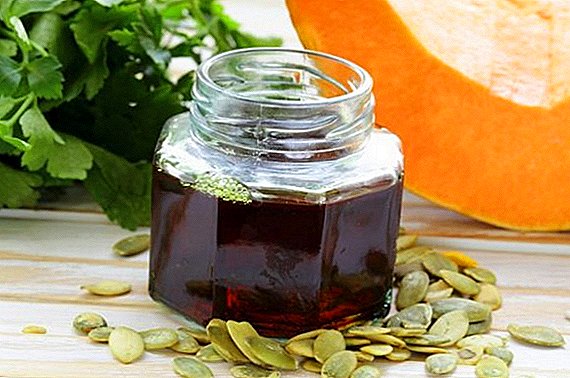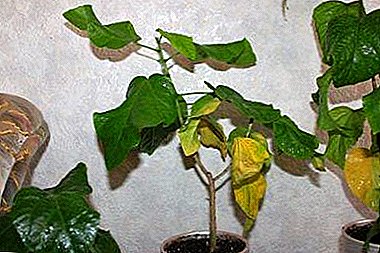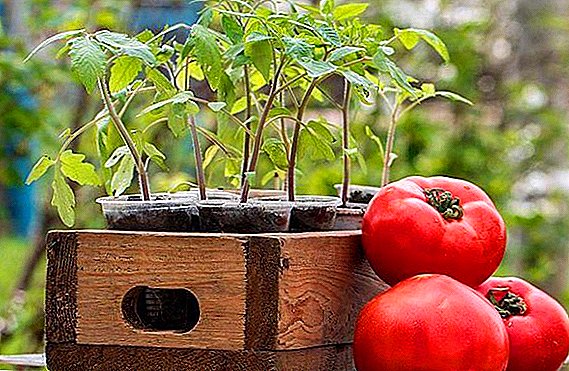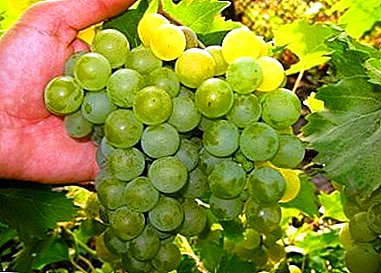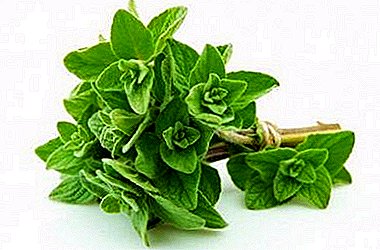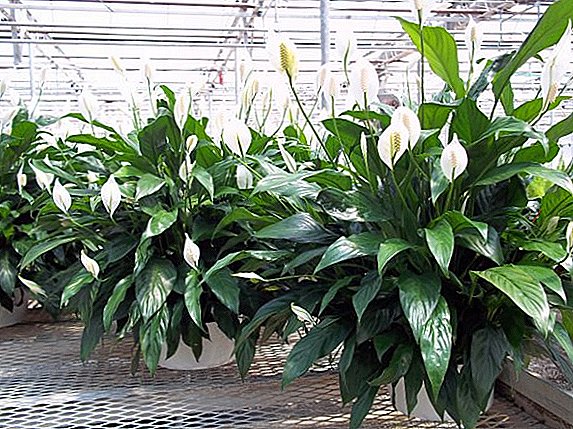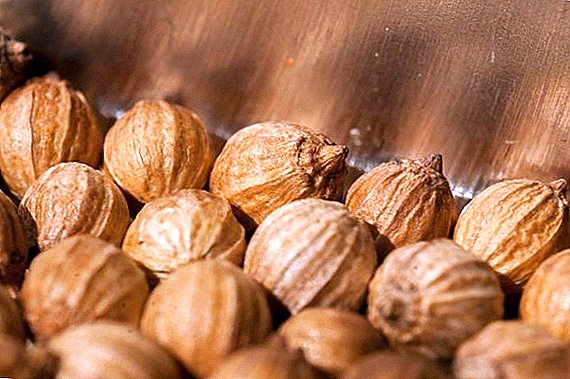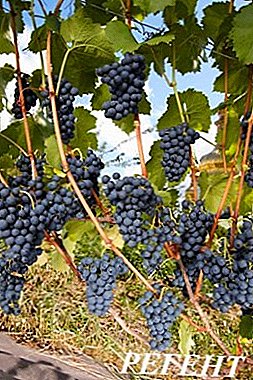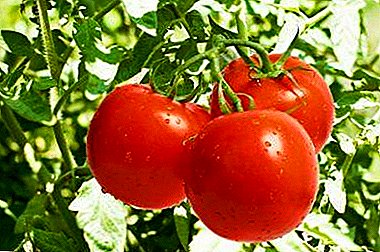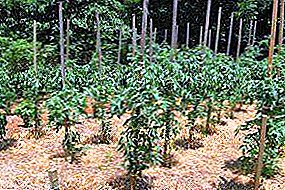
The process of mulching accelerates fruit ripening and at the same time increases the yield of vegetables. Its implementation requires certain skills and efforts, but it allows to achieve certain success.
Before telling about the features of this procedure, you need to give the very definition of this concept.
What is mulching?
 Mulching is a laying on beds with vegetable crops, in our case with tomatoes, different materials.
Mulching is a laying on beds with vegetable crops, in our case with tomatoes, different materials.
They can be organic or artificial, but they have only one function: regulation of moisture and air regime of the soil.
Speaking in a more accessible language, mulch protects the ground from drying out. With its presence on the surface of the soil does not form a dense crust, interfering with air exchange. But she has others useful qualities:
- mulch, laid out on beds, does not let the sun's rays through. Therefore, weeds do not germinate on them, destroying garden crops;
- under the layer the soil remains wet and friable longertherefore, watering and loosening are required by plants much less frequently. Which means reduced labor cost;
- Organic materials touch the surface of the ridge with their lower layer, which begins to spin, turning into a favorite food of earthworms, processing it into humus. Thus, tomatoes get more necessary fertilizers. Often, in this situation, you can do without constant dressings or significantly reduce their number;
- prevents evaporation of water from the surface of the ridge. Tomatoes are watered quite plentifully. But in a greenhouse, evaporating water is in an enclosed space. It creates an increased level of moisture, which is harmful for tomatoes. It leads to the appearance of phytophtoras and various kinds of fungal diseases. Mulch shares the sprout with a moist soil, making the plant healthy throughout the growing season;
- simplified procedure for watering seedlings. The water jet during this process does not erode the soil.
Types of mulch
To cover the soil use different materials. They are divided into industrial and natural.
To industrial include films and all sorts of non-woven fabrics. Some of them are able to pass water and air, while others are not. In addition, they may have different color shades.
 The most optimal industrial coatings for solanaceous are considered Agrotex materials and similar to them, but for many gardeners, the purchase of those becomes unnecessarily consuming.
The most optimal industrial coatings for solanaceous are considered Agrotex materials and similar to them, but for many gardeners, the purchase of those becomes unnecessarily consuming.
Therefore, they are replaced by roofing felt, cardboard, black polyethylene or even just old newspapers.
Organic coatings for tomatoes are much more beneficial.. Decomposing, they turn into humus, providing plants with additional nutrition. Due to this, the soil is saturated with various microelements, and with which it depends on the material.
Organic mulch can serve:
- straw and hay;
- compost;
- humus;
- peat;
- forest litter with soil layer. (It is considered the best organic mulch that can significantly improve the composition of the soil);
- wood shavings and sawdust;
- shredded bark of trees;
- young weeds without seeds;
- needles and fallen leaves.
Attention! Weeds with mowed grass not recommended to be placed under fresh tomatoes. They are best dried in the sun to get rid of insect parasites that feed on their juice. Otherwise, the pests will move to tomatoes, because they simply will not have other food in the limited space of the greenhouse.
Sometimes mulching is carried out with the help of pebbles, small crushed stone and expanded clay. But they bring little benefit, besides removing them from the ridges is problematic.
Now in more detail about the procedure for mulching with the help of some of the above materials.
Straw
 An excellent choice for greenhouse tomatoes. Its coverage of 10 cm, settling down, will decrease by about 3 times, but protects shoots from anthracnose, rot and spotted leaves.
An excellent choice for greenhouse tomatoes. Its coverage of 10 cm, settling down, will decrease by about 3 times, but protects shoots from anthracnose, rot and spotted leaves.
Straw freely provides air passage to the roots of seedlings and acts as a good heat insulator. But in such an environment is easy insect pests or rodents.
Grass
Weeded weeds, mowed grass, as well as stepchildren removed from tomatoes, are suitable for this purpose. The layer must be taken such that when it dries out, its height is not less than 5 cm. Grass decomposes quickly, you have to update itbut it will saturate the earth with nitrogen.
Leaves and needles
In addition to trace elementsforest floor gives the soil beneficial bacteria. It will and mulch, and at the same time, fertilizer. It is better to take it in the coniferous or deciduous forest.
Sawdust and bark
Durable and very durable material. Retains moisture well, so it's just perfect for a greenhouse. It is necessary to lay dry sawdust 8 cm thickthen it is recommended to shed it with a 5% urea solution. The soil should not be oxidized; for this purpose, ordinary chalk should be poured onto sawdust evenly, and slaked lime can also be used. It is capable of neutralizing the acetic acid resulting from a chemical reaction.
Compost
Prepared from various waste: debris, straw, torn weeds, scraps of paper, other similar materials. After decomposition and decomposition in the compost pit, they become an excellent nutrient mixture that worms quickly process.
Note! Compost - even overly useful fertilizer, the excess of which will lead to the fact that the plant will increase its green mass, but does not tie fruit.
Film
 Choose solid and opaque, then she able to resist weeds. The film should be pressed to the ground tightly enough.
Choose solid and opaque, then she able to resist weeds. The film should be pressed to the ground tightly enough.
When using it can occur root blooming of plants or their infection with fungal diseases. The reason - high humidity under the shelter itself.
Newspapers and cardboard
Paper is recycled wood. Any newspapers that are crushed and laid out are suitable. 15 cm layer. Compost or straw can be put on top, then the paper will not be blown away. Thanks to such actions the temperature of the soil will increase by no less than 2 degrees, and the layer will serve about two years. It is better to turn the paper in order not to rip it.
Nonwoven covering fabric
Its porous structure easily passes moisture and air. Serves about 5 years, protecting plants from fungus, pests or rot. Considered the most practical geotextilebut it is expensive. Perhaps this is his only flaw.
Ruberoid
Durable, reliable. It does not let the weeds germinate, does not let the sunlight through to the saplings. However, too toxic and can harm tomatoes and soil.
When to carry out this procedure?
 Mulch, as mentioned above, retains moisture in the soil and does not let the sunlight to it. therefore matter whether the greenhouse is heated or not.
Mulch, as mentioned above, retains moisture in the soil and does not let the sunlight to it. therefore matter whether the greenhouse is heated or not.
Laying the layer should occur in an unheated greenhousewhere the earth is not artificially heated. This should be done after the frost has passedand the earth has already warmed up quite deeply.
If the greenhouse is heated, mulching is done at any time when the plants are planted.
Laying technology determines the selected coating. Loose mulch is piled between plants. Layer should be a few centimeters. BUT you need to leave a small space around the stemto freely water shoots.
Conclusion
Competently carried out mulching of tomatoes in the greenhouse will significantly reduce the efforts of the gardener to grow tomatoes. Weeding, watering and loosening will need to be done less frequently.. But this procedure helps grow a rich and, most importantly, healthy crop!


